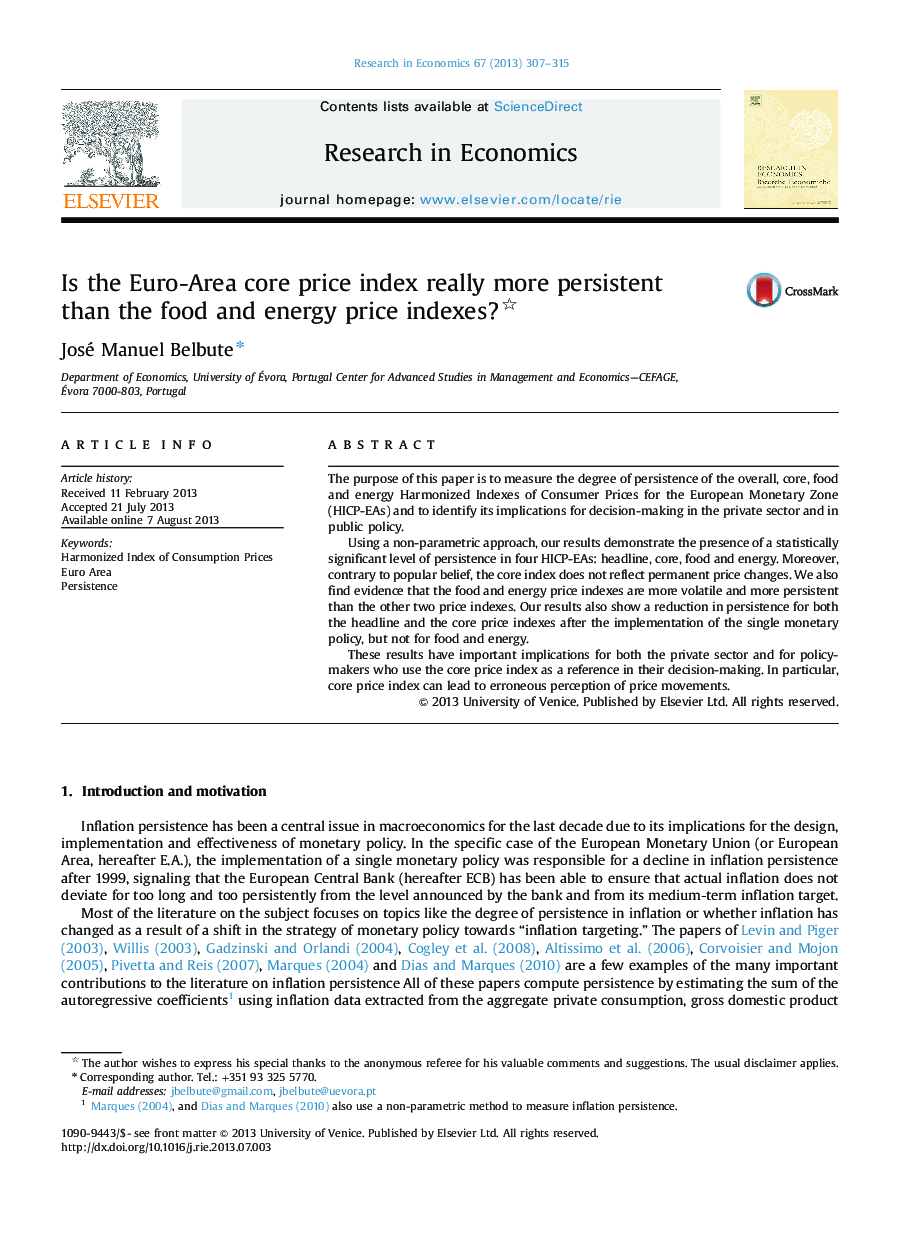| Article ID | Journal | Published Year | Pages | File Type |
|---|---|---|---|---|
| 984538 | Research in Economics | 2013 | 9 Pages |
•Using four HICPs for the Euro Area we assess whether the price movements, not the inflation, are temporary or permanent.•The degree of persistence is measured by the use of a new non-parametric methodology.•Our results show the presence of a statistically significant level of persistence in the four price indexes.•The E.A. core consumer price index do not describe a less volatile and a more permanent price movements.•Using the core index price as a reference may lead to biased decisions for the private sector and for policymakers.
The purpose of this paper is to measure the degree of persistence of the overall, core, food and energy Harmonized Indexes of Consumer Prices for the European Monetary Zone (HICP-EAs) and to identify its implications for decision-making in the private sector and in public policy.Using a non-parametric approach, our results demonstrate the presence of a statistically significant level of persistence in four HICP-EAs: headline, core, food and energy. Moreover, contrary to popular belief, the core index does not reflect permanent price changes. We also find evidence that the food and energy price indexes are more volatile and more persistent than the other two price indexes. Our results also show a reduction in persistence for both the headline and the core price indexes after the implementation of the single monetary policy, but not for food and energy.These results have important implications for both the private sector and for policymakers who use the core price index as a reference in their decision-making. In particular, core price index can lead to erroneous perception of price movements.
